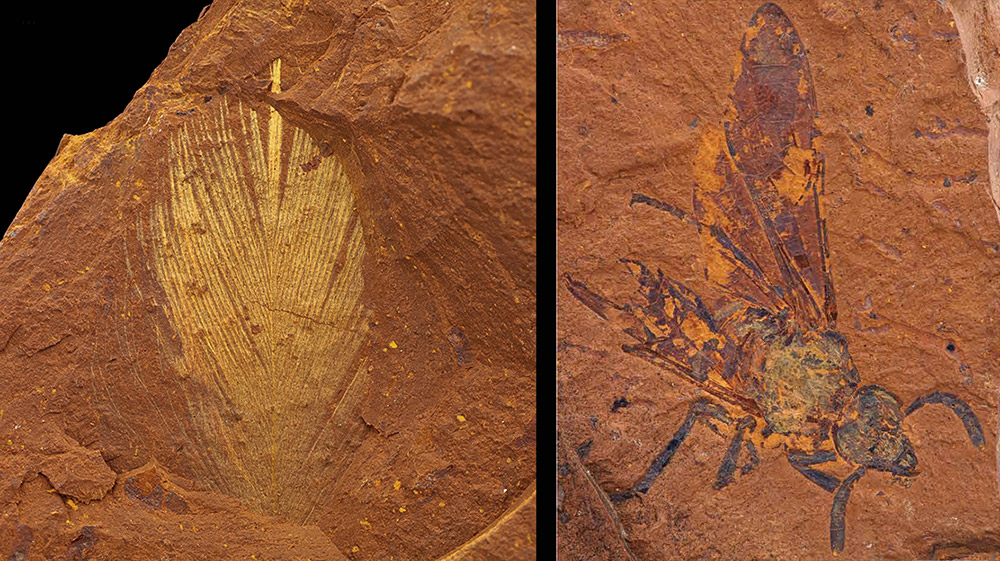An astonishing discovery: In southeastern Australia, paleontologists have unearthed the remains of a species-rich rainforest about 15 million years old. Thousands of almost completely converted fossils bear witness to the most fertile environment in this region at the time. Thanks to the encapsulated iron minerals, the traces are so well preserved that even individual cells are still recognizable. According to the team in Science Advances, this enables unique insights into the Miocene Australian environment.
Whether it is the oldest traces of life, 30-meter-long dinosaurs or the ancestor of the kangaroo: many unique fossils have been discovered in Australia. They document the diversity of the living environment and climate history on this continent. Australia experienced its last major change in the Miocene, about 15 million years ago, when the climate became drier and warmer relatively quickly. Previous rainforests and wetlands became savannas and forests, and the interior of the continent became desert.
Lush rainforest instead of dry bush
The newly discovered McGraths Flat fossil deposit in New South Wales, about 250 kilometers northwest of Sydney, provides unique insight into this phase of the upheaval. Paleontologists led by Matthew McCurry of the Australian Museum in Sydney discovered thousands of fossils from 16 to 11 million years ago. Among the discoveries are evidence of lush rainforest plants, as well as fossils of fish, birds, and rarely preserved invertebrates.
“The finds show that this area was once covered in a fairly warm and humid rainforest, and that life here in the central New South Wales pansies was once diverse and fertile,” McCurry explains. While rainforest areas are now restricted to protected areas east of the Great Dividing Range, fossil forests attest to the fact that rainforests were also present in the drier west until 15 million years ago.
“The fossil flora and fauna of McGraths Flat contrast starkly with the flora and fauna found in the area today,” the research team reported. The vegetation is more species-rich and lush, and many of these animal species can only be found in small remnants of the rainforests in the north and east of the continent.
Snapshot of relationships between predator and prey
Fossils range from over 50 different flowering plants to countless arthropods and insect larvae to fungi, pollen and other microfossils. Many of these fossils were previously completely unknown to science. These include rodents, new species of wasps, messy spiders and fish,” according to McCurry’s report. Some of these finds represent entirely new genera or families that were not previously recorded in Australia.
But that’s not all: “Fossils have also preserved interactions between species,” says senior author Michael Fries of the Australian Museum. The intestinal contents of some fish are so well preserved that one can still see the larvae of insects that once ate them. On the other hand, freshwater mussels on a fish’s fin and nematodes under the beetle’s shell refer to parasitic or symbiont relationships.
“The pollen grains on the insects’ bodies, in turn, tell us which species visited and which plants pollinated at that time,” Fries says. Traces of feeding by primitive insects can also be seen on some fossil leaves.
Iron-rich minerals time capsule
We owe these ideas above all to the extraordinary good condition of preserving the fossils. As a result, fragile organisms and the subtleties of their internal work were preserved. “Using an electron microscope, I can even image individual cells of plants and animals and sometimes recognize subcellular structures,” says Freese. The pigment cells of the animals were also preserved, allowing to reconstruct their previous colouration.
Paleontologists attribute this near-perfect preservation to the deposition of the iron-rich goethite minerals on the remains. “Our analyzes indicate that these fossils formed when iron-rich groundwater flowed into a watering hole,” McCurry explains. “The organisms that lived or fell into these waters were then covered with iron minerals that precipitated from the water.”
However, the fossils from McGrath’s Flat also reflect the first signs of impending change: “Some pollen from the sediment shows that drier habitat must have existed near this rainforest at the time,” McCary says. “This signals the beginning of a shift to drier conditions.” (Science Advances, 2022; doi: 10.1126/sciadv.abm1406)
Quelle: Australian Museum

Communicator. Reader. Hipster-friendly introvert. General zombie specialist. Tv trailblazer

